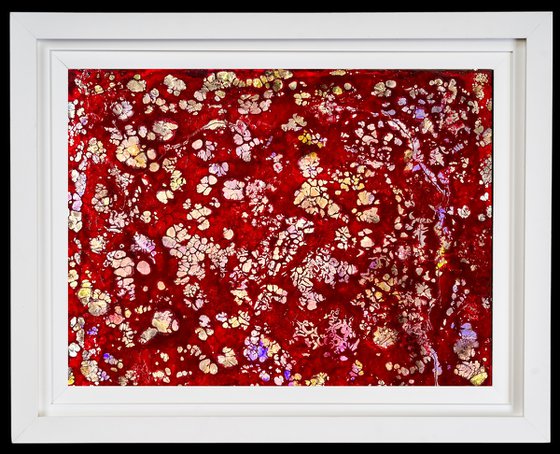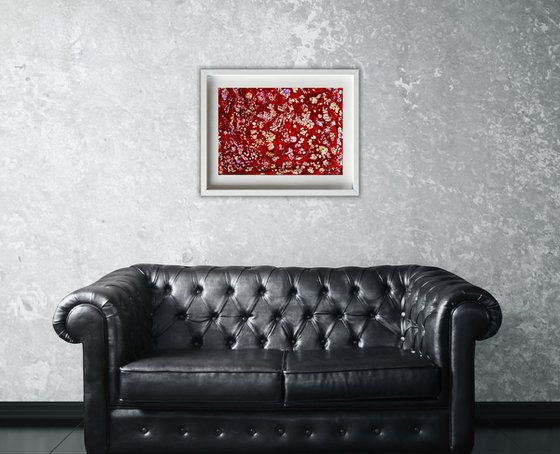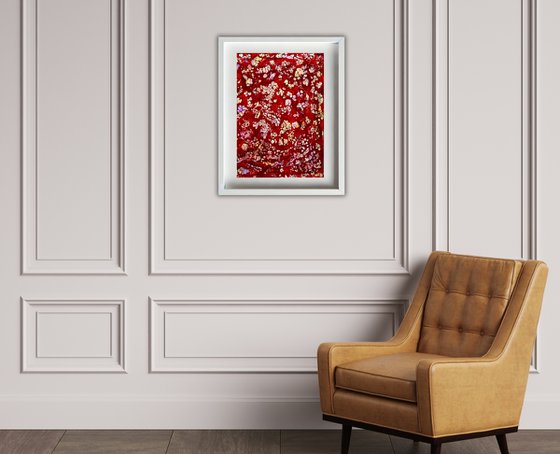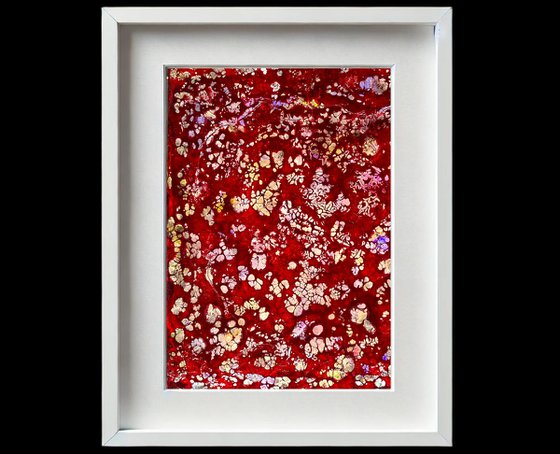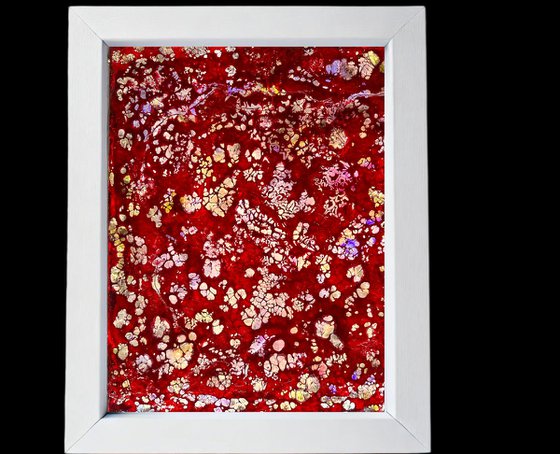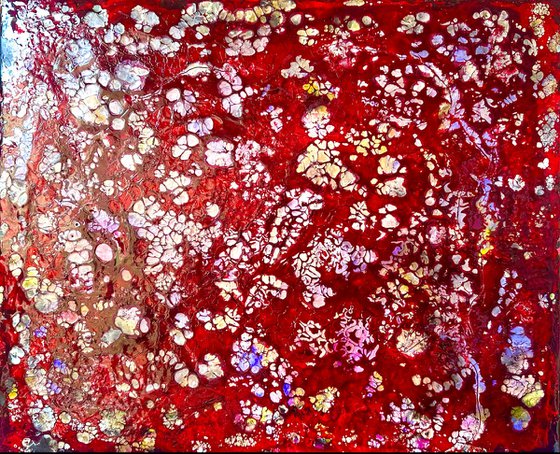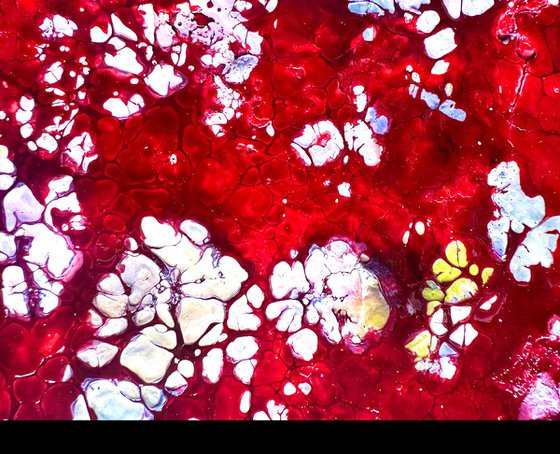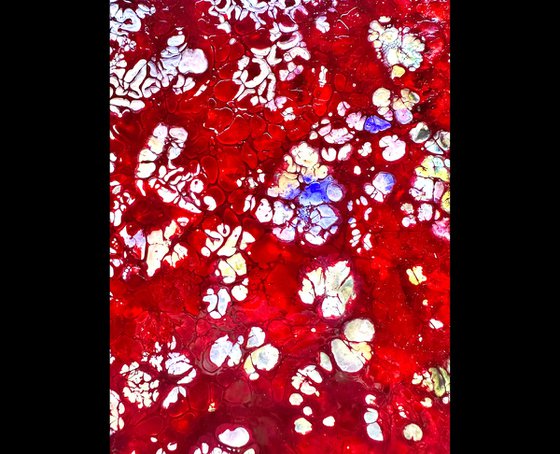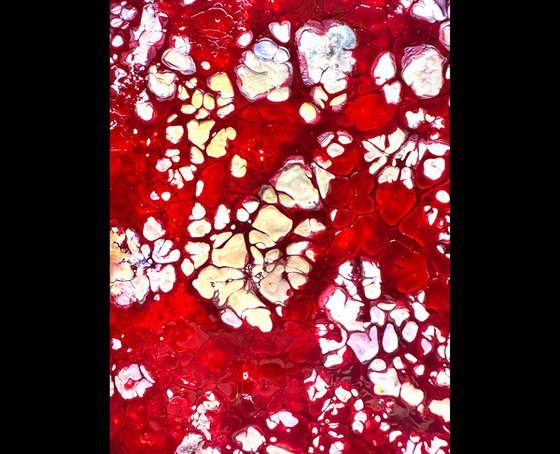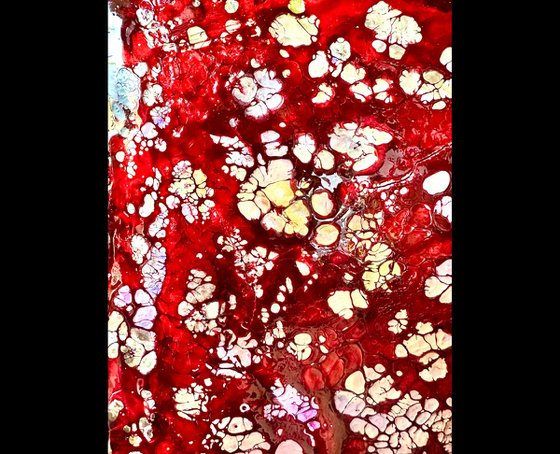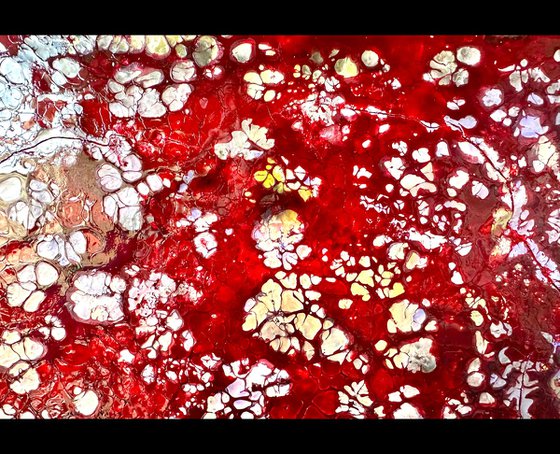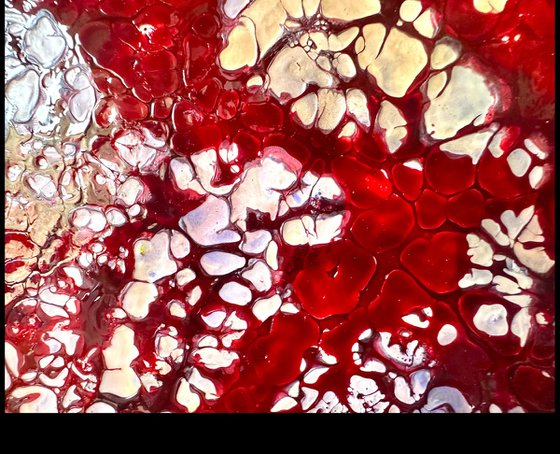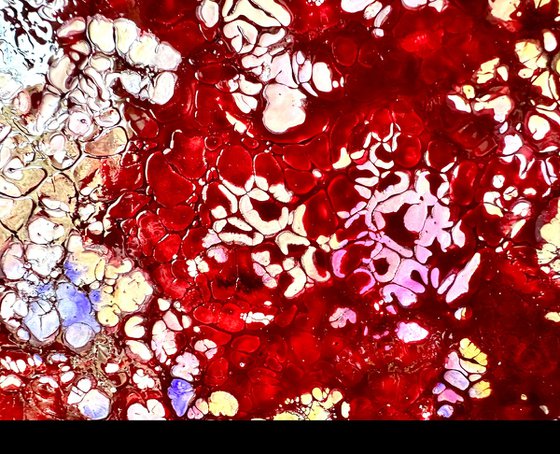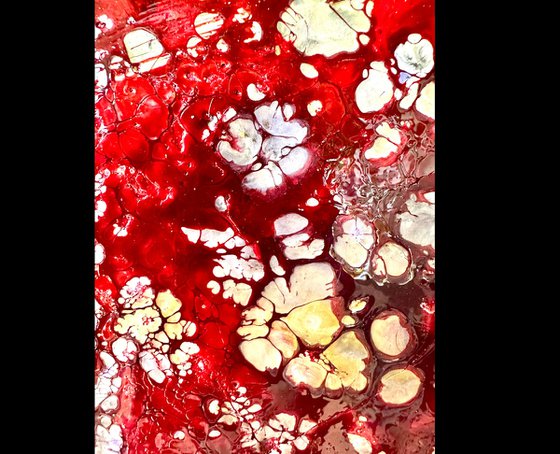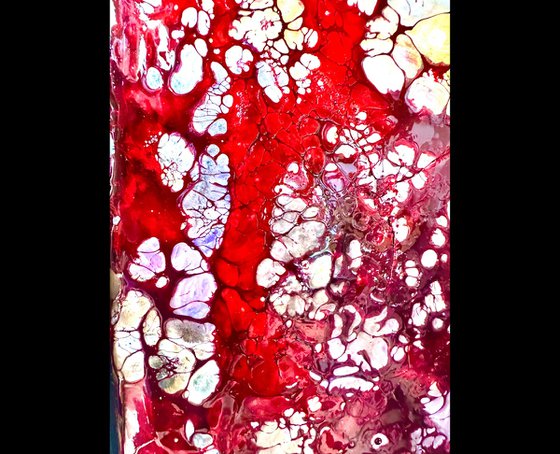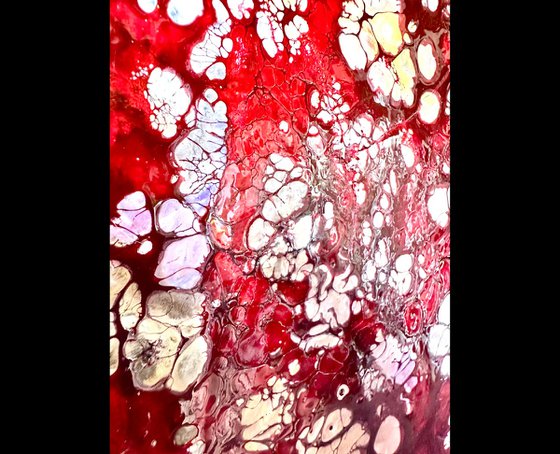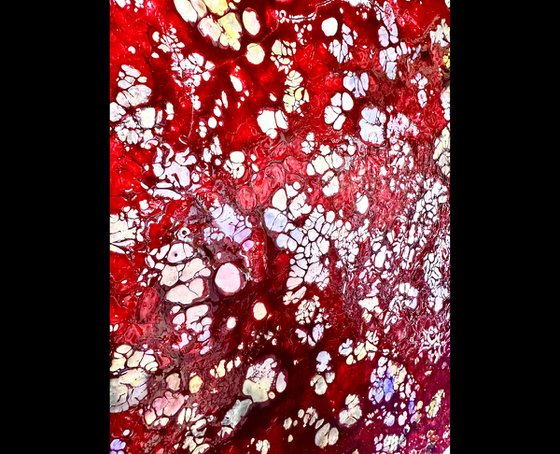- By medium
- By subject
- By budget
- Sales
- Gift cards
- Discover all art
- Artists
- Editors’ picks
- Ideas
Original artwork description:
GEISHA
"Geisha" is a visually captivating piece that fuses the emotional intensity of the color red with the ethereal delicacy of floating organic forms. Through the encaustic technique, the artist achieves a rich and tactile texture, in which the pigmented wax creates depth, shine, and an almost liquid sense of movement.
The vibrant red background evokes passion, mystery, and vitality, while the pearly and nacreous shapes scattered across the surface resemble flowers, petals, or lace, evoking the subtle and ceremonial elegance of a geisha. The interplay between warm tones and iridescent reflections provides a visual dynamism that invites slow, sensorial contemplation.
This work not only captures the refined aesthetic of Eastern culture but also conveys a restrained force, an energy that slowly unfolds beneath the surface, much like the silent yet powerful presence of a geisha.
THE ENCAUSTIC TECNICHE
The encaustic technique is an ancient painting method that uses heated beeswax as a binder for pigments. The term "encaustic" comes from the Greek *enkaustikos*, meaning "to burn," as the color is fixed through the application of heat.
The main advantages of encaustic painting are its brilliance, durability, resistance to moisture, and its unique effect of depth and transparency. However, its complexity and the need to work with heat make it less common than other techniques such as fresco or tempera.
To create an encaustic painting, the artist melts wax and mixes it with pigments before applying it to the surface with brushes or palette knives. Heat is then used to fuse and fix the colors, resulting in a smooth and durable finish.
Today, the encaustic technique is being rediscovered by contemporary artists who use it to create innovative and experimental works.
Materials used:
Encaustic on Wood
GEISHA (2025) Painting
by Xavi Castel
£1,283.55
- Painting on Panel / Board / MDF
- One of a kind artwork
- Size: 45 x 37 x 1cm (unframed) / 37 x 45cm (actual image size)
- Signed certificate of authenticity
- Style: Organic
- Subject: Abstract and non-figurative
Loading
Original artwork description
GEISHA
"Geisha" is a visually captivating piece that fuses the emotional intensity of the color red with the ethereal delicacy of floating organic forms. Through the encaustic technique, the artist achieves a rich and tactile texture, in which the pigmented wax creates depth, shine, and an almost liquid sense of movement.
The vibrant red background evokes passion, mystery, and vitality, while the pearly and nacreous shapes scattered across the surface resemble flowers, petals, or lace, evoking the subtle and ceremonial elegance of a geisha. The interplay between warm tones and iridescent reflections provides a visual dynamism that invites slow, sensorial contemplation.
This work not only captures the refined aesthetic of Eastern culture but also conveys a restrained force, an energy that slowly unfolds beneath the surface, much like the silent yet powerful presence of a geisha.
THE ENCAUSTIC TECNICHE
The encaustic technique is an ancient painting method that uses heated beeswax as a binder for pigments. The term "encaustic" comes from the Greek *enkaustikos*, meaning "to burn," as the color is fixed through the application of heat.
The main advantages of encaustic painting are its brilliance, durability, resistance to moisture, and its unique effect of depth and transparency. However, its complexity and the need to work with heat make it less common than other techniques such as fresco or tempera.
To create an encaustic painting, the artist melts wax and mixes it with pigments before applying it to the surface with brushes or palette knives. Heat is then used to fuse and fix the colors, resulting in a smooth and durable finish.
Today, the encaustic technique is being rediscovered by contemporary artists who use it to create innovative and experimental works.
Materials used:
Encaustic on Wood
14 day money back guaranteeLearn more
